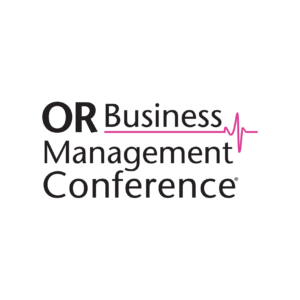Session: Crew Incentives: 3 Guiding Principles to Leverage Value Analysis Teams
Editor's Note
Jasmine Hampton-Nicholson MSN, RN, CNOR, learned the value of a value analysis team (VAT) the hard way. “I thought that we had a very solid process for our value analysis team,” said the VP of perioperative services at Temple University Health System in a presentation at 2025 OR Business Management Conference. “And then we had a sentinel event that made us do a hard stop and look at our entire process.”
Hampton-Nicholson went on to describe how no one in the OR stopped to question the approval status of an unvetted device introduced mid-procedure to address challenging circumstances of that particular case. The result: a $60,000 bill for a product that was neither contracted nor properly evaluated, as well as unknown risks to the patient. Although no adverse outcomes resulted from the decision, the incident prompted a complete overhaul of Temple’s value analysis process.
Drawing on this experience and lessons learned since, Hampton-Nicholson devoted her presentation to three characteristics of effective VATs:
- Effective product evaluation. Temple structured a rigorous, multidisciplinary value analysis committee with representation from surgical services, finance, supply chain, physician leadership, and frontline staff. The team evaluates each product through a three-pronged framework: product evaluation, research and alternatives, and product approval and compliance. No longer can a request move forward through an informal email or a hallway conversation, Hampton Nichols explained. Rather, each submission must be fully documented, signed off by department leadership, and assessed for clinical necessity, financial impact, and patient outcomes. As an example, she cites the decision to switch to an alternative wound matrix product across multiple service lines—a conversion that not only helped patients, but also saved $85,000.
- Rigorous research of requested products and careful evaluation of alternatives. Key steps include identifying clinical needs, sourcing evidence, and comparing options. Resources include reviews of clinical studies, product trials, and vendor information. Hampton-Nicholson also encouraged reaching out to other health systems using a requested products for feedback on how they work in practice.
- A standardized product approval process with careful compliance monitoring. Temple uses a centralized tracker to log every approved product, anticipated volume, associated CPT codes, and real-world usage data. “It doesn’t have to be fancy—we use an excel spreadsheet,” Hampton-Nicholson noted. This proactive approach ensures that projections match actual spending and prevents costly surprises at year-end budget reviews. The team also leverages its purchasing power across facilities to negotiate better pricing and standardize care across the system.
Encouraging questions and offering anecdotes throughout the presentation, Hampton-Nicholson emphasized the importance of formalizing a submission process for new products. Temple’s SVAT submission form for product review requests is comprehensive by design, with fields for product details and company contacts, anticipated volumes and CPT codes, conflicts of interest, and more. This form must be filled out even when requesting emergency-use items.
Overall, the conference presentation emphasized the value of a a structured, data-driven value analysis process for mitigating risks to patient and organization alike.
Read More >>

 Free Daily News
Free Daily News